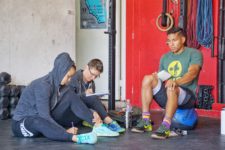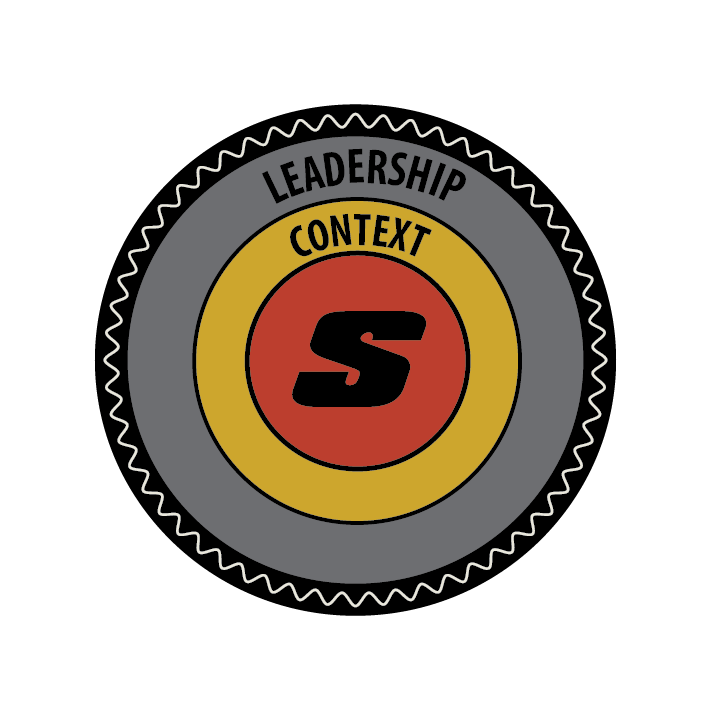
**The following is an excerpt from Week 12 – Building the Standard: Scaling For Relative Intensity of Coach’s Prep 101, our online coach’s development course**
We’re now getting into the action of on the floor coaching with this notion of “building the standard”. If you’ve spent any amount of time in the current microgym scene, you’ve heard the word “scaling” and you most likely attribute it to what you’d do if someone couldn’t do the training that you’re asking them to do. Simply put, we often think of scaling as a means to problem solve when someone isn’t fit enough for your workout.
I’d like to change your mind about scaling. Scaling is a tool that allows us, though a number of different variables, to connect the athlete to the intended stimulus of the training. In order for this to make sense and have value, we’ll need to make two assumptions:
- This training has a purpose.
- Relative intensity is more important than absolute intensity.
While it may sound cheeky, you’d be surprised at how many programs in the fitness industry, especially those for the general population, don’t have a purpose when you get down to it. Rather, the training is an assortment of potentially fun, fitness-flavored activities. Yet, most people participate in fitness for a desired outcome. This desired outcome would help us define the purpose of the training by answering the question, “Why are we doing this?” After all, are we squatting today to develop strength? Is this clean prescribed to develop speed and power? If so, scaling matters.
The second assumption is nearly as important as the first. In sport, absolute intensity trumps relative intensity. In the Tour de France, for example, the winner is not determined by way of a questionnaire of whose experience was relatively hardest. The winner is the person who did the prescribed work fastest (SEE: Power, Absolute Intensity). Training, however, is different. In training, relative intensity trumps absolute intensity because of the our first assumption. If the training has an intended purpose, it’s through the athlete’s relative ability to access that intended stimulus that allows her to extract the intended adaptation.
If my mother and, World’s Strongest Man competitor, Robert Oberst, enter a powerlifting competition, their individual totals would represent their absolute intensity. My mother would post tiny numbers and Mr. Oberst would post huge numbers. In this case, the person with the highest total (Robert) would win. His absolute intensity would be much greater than my mother’s, yet if they both achieved their best lifts that day we can say that there was a tie in terms of relative intensity.
Once we leave the sport context and enter into training, a 5×5 back squat session for strength development with my mother and Mr. Oberst, things change. Each needs to access relative intensity in order to challenge and develop their respective strength abilities. Asking my mom to train with Mr. Oberst’s weights or asking Mr. Oberst to train with the weights my mother would use for the squat would be a failure in relative intensity and would impede either athlete from achieving the desired adaptation of the training day. While this is a silly example, failure to achieve relative intensity is rampant in the gym because of poor attention to this detail. Misaligning the intended stimulus of the training and the relative experience of the athlete leaves performance on the table.
I cannot underscore enough how critical scaling for relative intensity is for coaches. In fact, the moment we create a specific program or training day for a group of people, we, by definition, activate the need for scaling towards relative intensity. When using uniform training for a population of any size with different strengths, weaknesses, and limitations, the coach’s ability to connect each unique athlete to the intended stimulus of the training will be directly correlated to the efficacy of the training.

MODEL: What Makes Great Coaching?
When taking on this role as the liaison between the intended stimulus of the author of the workout and the athlete(s) standing in front of you, you have a host of options at your disposal. These options for scaling include but are not limited to:
-Range of Motion
-Movement
-Complexity
-Load
-Equipment
-Volume
-Intensity
-Stability
-Etc
In determining which elements to scale in order to achieve the proper relative intensity the coach must consider what is in the way. In other words, what about the athlete(s) in front of you is limiting access to the intended stimulus. Is it pain? Is it skill development? Is it mobility? Is it strength? Scaling away from these limitations towards the ideal relative experience, then, increases the value of the training day.
Once we recognize how critical scaling is, not just in order to make things easier but to connect the athlete with the purpose of the training, then we can be intentional about how to go about that scaling. Remember, we’re training for adaptation. Relative intensity is the road map to this adaptation.
In this program, coaches from around the world receive video lecture, reading assignments like this one, occasional quizzes, and practical assignments each week over nine months to develop the craft of coaching. You can find a FREE lecture and more information about enrollment at prep.deucegym.com now.
Logan Gelbrich
@functionalcoach
9/26/17 WOD
Complete the following for time:
40 Squats
——-
6 rounds:
50′ Reverse Sled Drag (300/200)
12 Lateral Jumps (1-ct)
8 Alt DB Snatches (50/30)
——–
40 Squats




